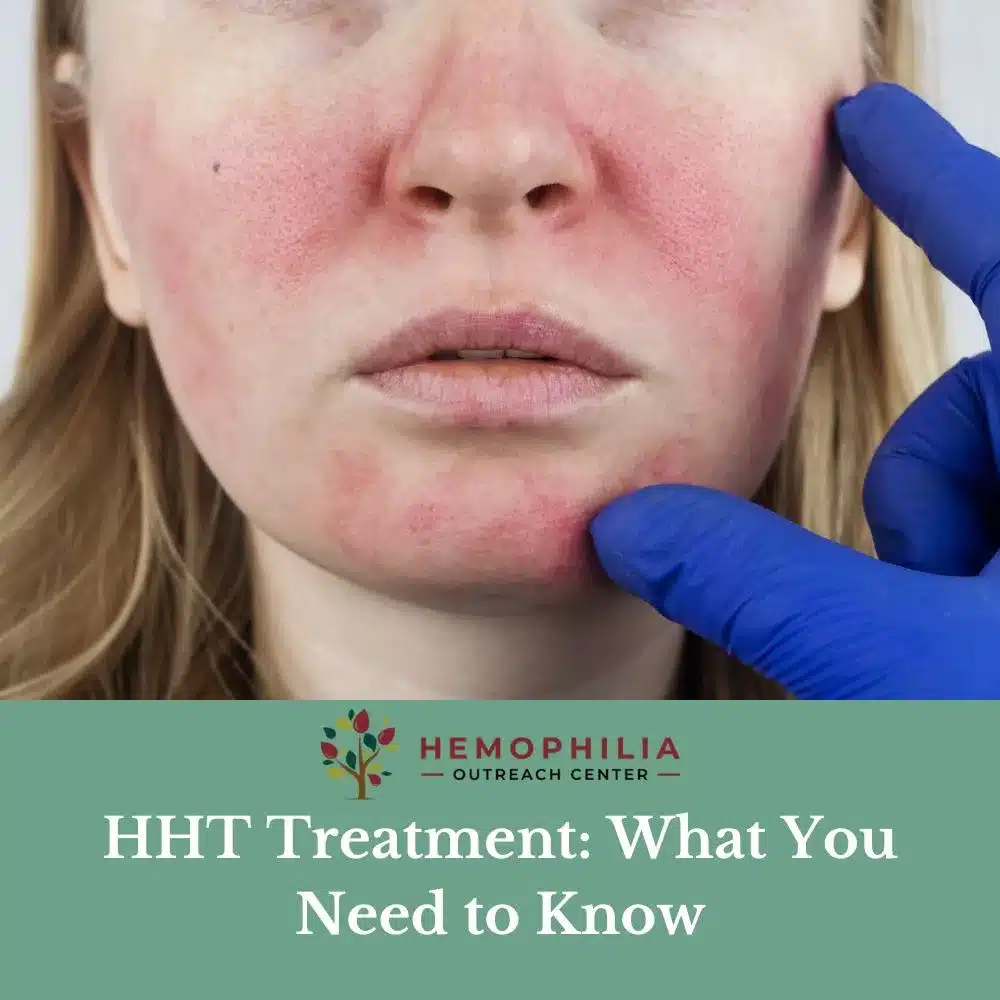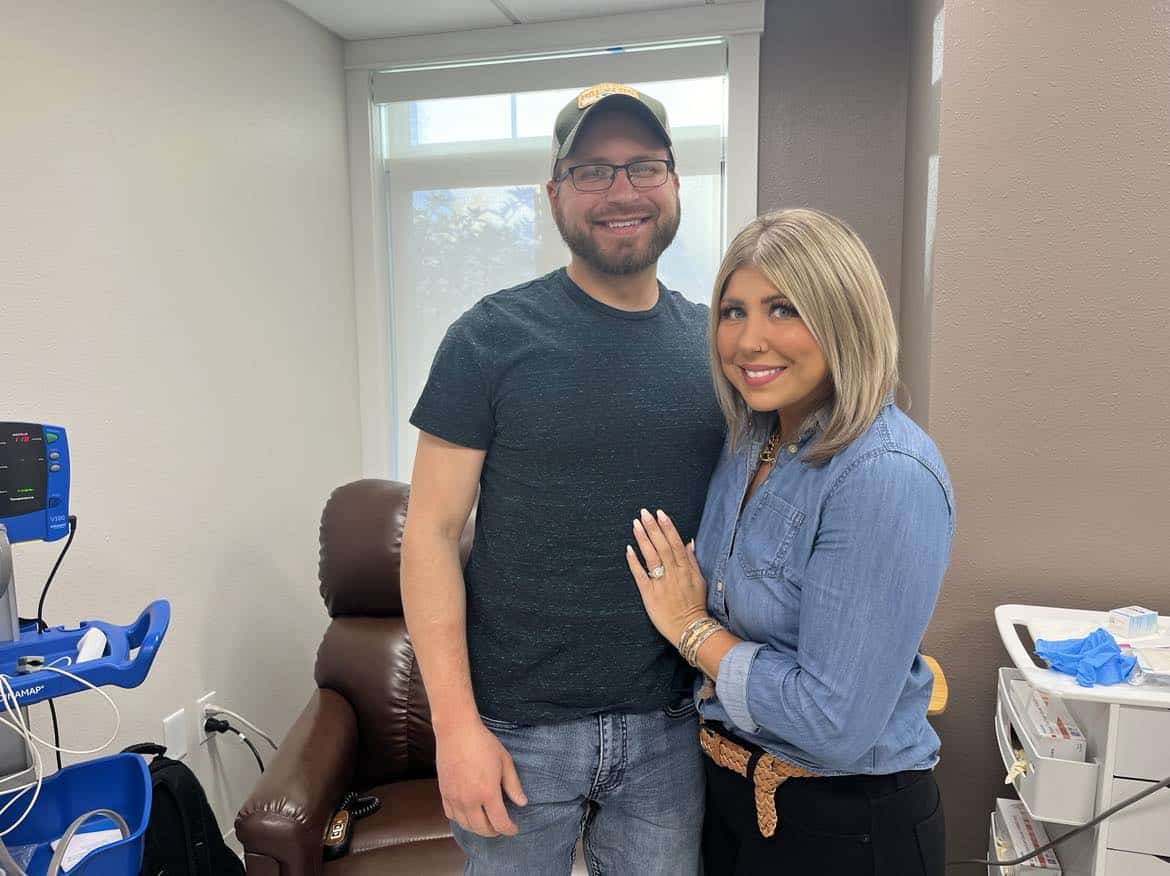Hereditary Hemorrhagic Telangiectasia (HHT), also known as Osler-Weber-Rendu disease, is a genetic disorder that affects blood vessels and can lead to significant health issues. Understanding the current treatments for HHT is crucial for those diagnosed with the condition, as well as their families. This comprehensive guide aims to demystify HHT treatment options, shed light on the survival rates, discuss its classification as a disability, and highlight the most common symptoms associated with the disorder.
With advancements in medical science, individuals with HHT have a range of treatment options available to manage their symptoms and lead fulfilling lives. This post will delve into the intricacies of HHT treatment, backed by medical research and insights from leading healthcare professionals, including those at the Hemophilia Outreach Center (HOC), serving all of Wisconsin and upper Michigan with care teams in Green Bay and Wausau.
Understanding HHT
Hereditary Hemorrhagic Telangiectasia is a condition characterized by the development of abnormal blood vessels that can cause bleeding in the skin, mucous membranes, and various internal organs. These abnormal vessels, known as telangiectasias and arteriovenous malformations (AVMs), lack the capillaries between arteries and veins, leading to direct connections that can rupture and bleed.
Symptoms and Diagnosis
The symptoms of HHT can vary widely among individuals but often include frequent nosebleeds, red spots on the skin or inside the nose and mouth, menorrhagia, internal bleeding, and anemia. More severe cases might involve bleeding in the lungs, liver, or brain. Diagnosis typically involves a combination of medical history, physical examination, and genetic testing, along with imaging studies to identify AVMs in organs.
Genetic Background
HHT is inherited in an autosomal dominant pattern, which means a child has a 50% chance of inheriting the disorder if one parent has the disease. Mutations in several genes, including ENG, ACVRL1, and SMAD4, have been linked to HHT, each affecting the development of blood vessels in different ways.
Impact on the Body
The direct connection between arteries and veins in HHT patients can lead to various complications, depending on the location and size of the AVMs. These can range from minor issues, such as nosebleeds, to life-threatening conditions, such as brain bleeds or heart failure, due to the increased workload on the heart and potential for significant internal bleeding.
Current Treatments for HHT
The approach to treating HHT is multifaceted, focusing on managing symptoms, preventing complications, and improving the quality of life for those affected. Since HHT manifestations can vary significantly from person to person, treatments are highly individualized.
1. Targeting Nosebleeds (Epistaxis)
Nosebleeds are the most common symptom of HHT and can range from minor to severe. Treatments include:
- Moisturization: Keeping the nasal passages moist with saline sprays and humidifiers can help reduce nosebleed frequency.
- Laser Therapy: This involves cauterizing the affected blood vessels in the nose to reduce bleeding.
- Topical Treatments: Application of nasal creams or ointments that promote blood clotting.
- Surgical Options: In severe cases, septal dermoplasty or embolization may be considered to reduce or stop nosebleeds.
- Anti-fibrolytic Therapies: Such as Amicar or Lysteda
2. Managing AVMs
AVMs in organs such as the brain, lungs, and liver pose significant risks and are managed through:
- Embolization: A minimally invasive procedure that blocks the abnormal blood vessels, preventing bleeding.
- Surgery: In cases where embolization isn’t possible or effective, surgery may be necessary to remove the AVM or surgically repair the damaged vessels.
3. Iron Supplements and Blood Transfusions
Chronic bleeding can lead to anemia, which is often treated with iron supplements or, in more severe cases, blood transfusions.
4. Medications
Certain medications, including antifibrinolytics (to prevent excessive bleeding) and bevacizumab (to reduce the number and size of nasal and gastrointestinal AVMs), have shown promise in managing HHT symptoms.

Living with HHT: Lifestyle Adjustments and Support
Living with HHT requires adjustments and precautions to minimize risks and manage symptoms effectively.
Avoiding Certain Medications
Patients with HHT should avoid medications that can exacerbate bleeding, such as aspirin and other nonsteroidal anti-inflammatory drugs (NSAIDs).
Regular Monitoring and Check-ups
Regular medical check-ups, including imaging tests to monitor AVMs, are crucial to detect and address potential complications early.
Evidence shows that comprehensive care such as that provided by an HHT Center of Excellence, reduces mortality due to providing these important services. However, HHT Centers of Excellence are not readily available in all cities and states, which can create a burden to patients. HOC ‘s comprehensive care program is designed to assure that HHT patients still receive all of their needed routine screenings along with bleed prevention and treatments. HOC will coordinate with local medical centers to provide all needed diagnostic testing required.
Nutritional Considerations
A balanced diet, rich in iron, can help manage anemia. Some patients might benefit from dietary counseling to ensure their nutritional needs are met, especially if gastrointestinal bleeding is a concern.
Emotional and Psychological Support
Living with a chronic condition like HHT can be emotionally taxing. Support groups, counseling, and therapy can provide crucial emotional support. Organizations like the Hemophilia Outreach Center offer resources and community support to individuals and families affected by HHT, emphasizing the importance of a strong support network.

Specialized Care at Hemophilia Outreach Center
For those in Wisconsin and upper Michigan, the Hemophilia Outreach Center’s care teams in Green Bay and Wausau offer comprehensive care for individuals with HHT. These teams provide access to specialists familiar with the complexities of HHT, ensuring patients receive targeted treatments and support tailored to their unique needs. Green Bay Care Team | Wausau Care Team
Long-Term Management and Monitoring
Living with Hereditary Hemorrhagic Telangiectasia (HHT) requires a proactive approach to healthcare, with regular monitoring and management to prevent complications and maintain quality of life. The key to successful long-term management lies in a partnership between patients, their families, and a multidisciplinary healthcare team.
Routine Health Surveillance
Regular check-ups are essential for detecting and treating AVMs before they cause serious complications. These include imaging studies such as MRI, CT scans, and echocardiograms to monitor the lungs, brain, and liver for AVMs. Early detection and treatment of AVMs can significantly reduce the risk of life-threatening complications.
Genetic Counseling
Given the hereditary nature of HHT, genetic counseling is recommended for individuals diagnosed with the condition and their family members. Counseling can provide valuable information about the risks of inheritance, the implications for future generations, and guidance on family planning.
Education and Advocacy
Education about HHT and effective advocacy are crucial for navigating healthcare systems and accessing necessary treatments. Patients and families should be informed about the latest research, treatment options, and resources available to them. Organizations like the Hemophilia Outreach Center play a vital role in providing education and support to the HHT community.
Innovations in Treatment and Research
The landscape of HHT treatment is evolving, with ongoing research aimed at understanding the genetic and molecular basis of the disease and developing more effective therapies. Innovations in treatment and research hold promise for improving the lives of those affected by HHT.
Targeted Drug Therapies
Research is also focused on developing targeted drug therapies that can more effectively manage symptoms and prevent complications. For example, drugs that specifically target the pathways involved in blood vessel formation could offer new ways to treat or prevent AVMs.
Clinical Trials
Participation in clinical trials is a crucial step in the development of new treatments. Patients with HHT may have the opportunity to participate in trials testing new drugs, procedures, or therapies. These trials not only contribute to the advancement of science but also offer participants access to cutting-edge treatments.
Learn more about participating in a clinical trial.
Conclusion
As we explore the complexities of living with HHT and the promising avenues of research, it’s clear that a comprehensive approach to care is essential. The Hemophilia Outreach Center’s dedication to providing specialized care for HHT patients in Green Bay and Wausau underscores the importance of accessible, expert treatment and support. Green Bay Care Team | Wausau Care Team
Through continued research, innovation, and community support, there is hope for improved treatments and ultimately, a cure for HHT. Until then, the focus remains on enhancing the quality of life for those affected through comprehensive care, education, and advocacy.




